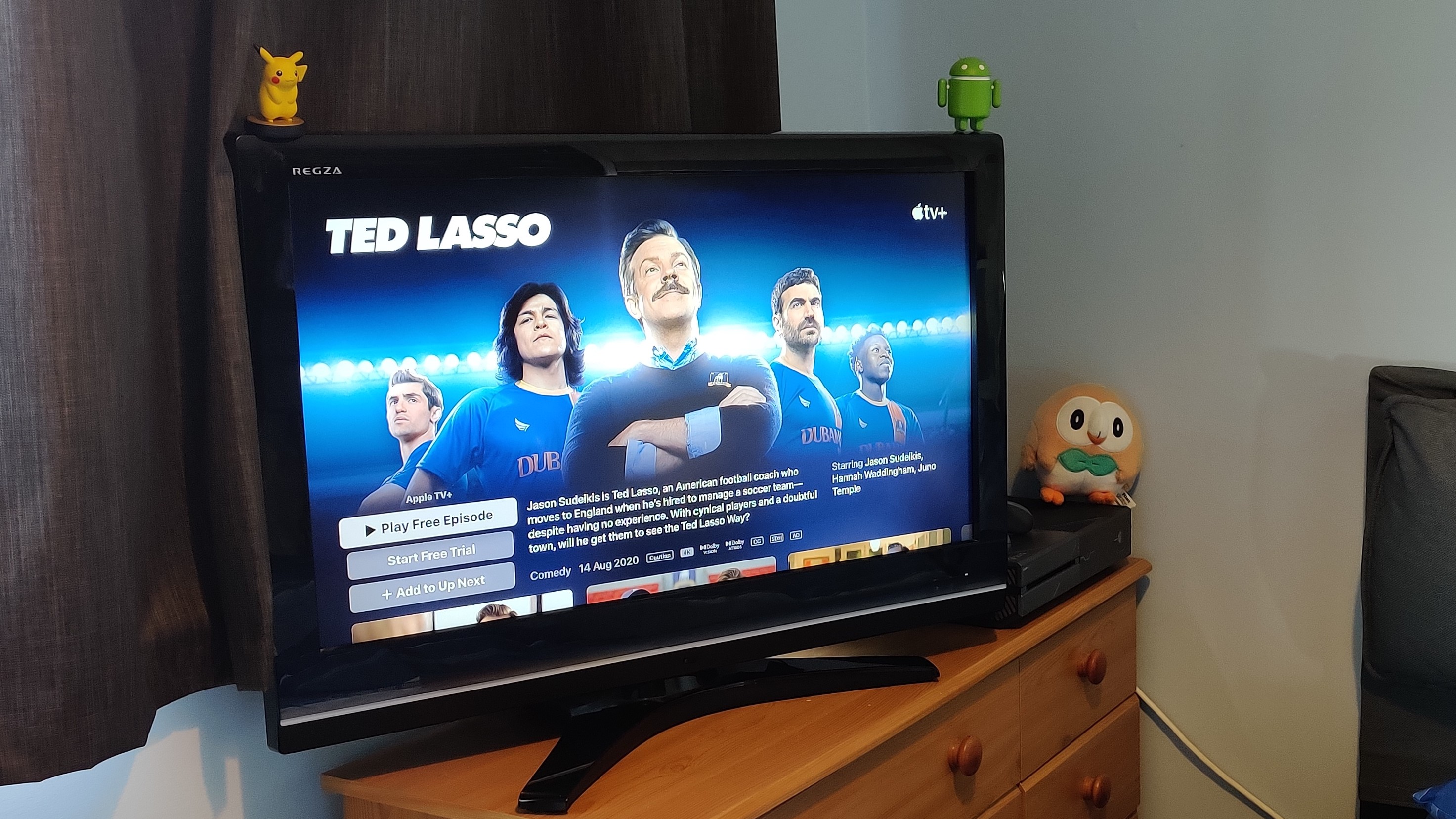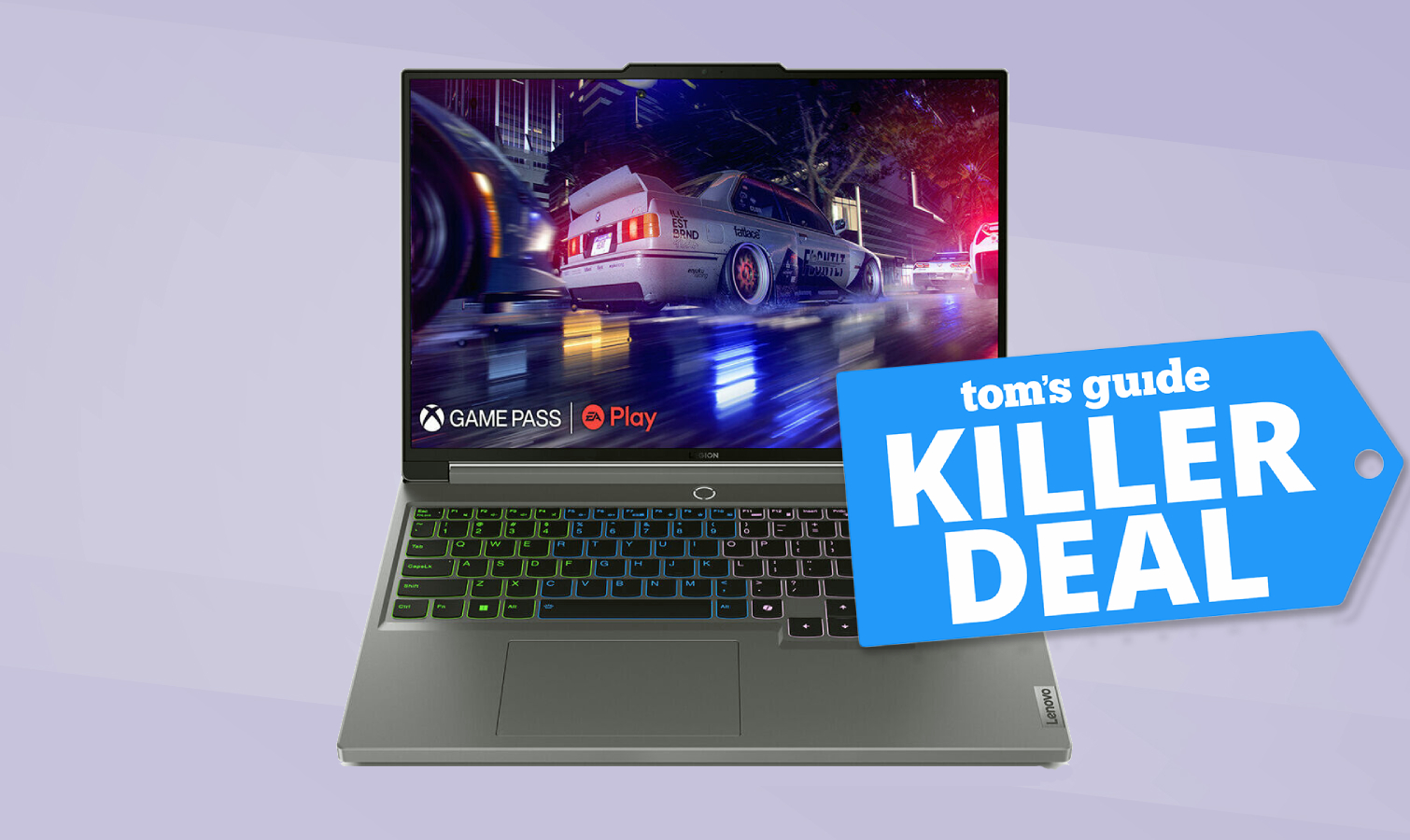Why I still won’t ditch my 11-year-old TV
My 1080p TV still works fine. So why get rid of it?

It’s been nearly four and a half years since I purchased a new TV. It was a time when prices had started falling, and the Black Friday discounts meant I could pick up a 40-inch screen with 4K and HDR for $100 less than my then-current TV had cost me six years earlier.
Normally in those situations you’d get rid of the old model and revel in the improvements your new screen has to offer. I had 4K and HDR now, with upscaling to boot, so the older, bulkier screen is basically obsolete.
- See the best streaming devices you can buy
- The best TVs available right now
- Super Bowl commercials 2021 — the best (and worst) so far
Except I never did. The 30-pound, 32-inch Full HD TV I picked up at Costco back in 2010 never left my side.
These days it’s not uncommon to swap out our older devices for the latest and shiniest model. It may have plenty of life left in it, but we’re told new equals better and that’s the way it should be. That doesn’t stop it from being wasteful, and when faced with the prospect of getting rid of my old TV I just thought, “well there’s nothing wrong with it, so why not keep it?”
There are plenty of things that have gone wrong with that TV over the years, so maybe that statement isn’t entirely true. There’s been a prominent dead pixel on the left side of the screen for the better part of a decade now, and the USB port doesn’t read data anymore. It also predates the affordable smart TV, so you need a streaming device if you want binge Netflix or Amazon.
Crucially, if I want to watch movies and play video games, the 11-year-old TV works just as well as the day I bought it. I could have taken the set to the local recycling center, donated it to charity, or even given it away to a random person, but I just didn’t see the point. Certainly not when I could still put the aging TV to good use.
Old doesn't mean useless
I’m not a hoarder and I didn’t keep the screen so it could take up space and gather dust; my solution was to put it in my bedroom. That way I can watch TV in bed whenever the feeling arises. After all, there’s nothing more comfortable as your own bed. It really didn’t matter than I was living in a one-bedroom apartment at the time, and both screens were less than 5 seconds away from each other.
Sign up to get the BEST of Tom's Guide direct to your inbox.
Get instant access to breaking news, the hottest reviews, great deals and helpful tips.
I’ve moved twice since then, once to an even smaller (and cheaper) place, and then again to an actual house with more than one floor. I still have both TVs, and the now-11-year-old-box is still in my bedroom and still gets plenty of use.
In fact, before I redecorated it my old set was the only TV getting any use, on account of its bulk making it a lot more stable on the limited furniture I had.
I can’t say I’ve never faltered in my loyalty to the old screen, however. I am a practical person, and there are reasons why you might not want a heavy, aged TV lying around. It’s pretty big for starters, and the frame around the screen means it's much bigger than a replacement 32-inch TV would be.
Hell, it’s bigger than the new TV that took its place in my living room. Seriously, over the past ten years we’ve seen the much-needed death of the bezel and there’s no better way to visualize that than looking at my TVs side-by-side.
But hey, the thickness of the thing also means I can adorn it with random nerdy stuff. That already makes it more interesting to look at than a newer TV, no matter how advanced in years it may be.
The legacy ports I need
But even then, as long as the TV works, I have no plans to get rid of it. I definitely wouldn’t be opposed to having a third screen in my office, or maybe I could keep it in reserve for tinkering with older tech. Because there’s still plenty of stuff that isn’t immediately compatible with modern TVs.
I discovered this first-hand when dusting off my old PS2, and realizing I couldn’t remember how it was supposed to plug into the new TV. Trying to get everything sorted meant figuring out where the problem was, and whether it was the adaptor, the cable or something else entirely. Thankfully Grandpa TV came to the rescue, with its composite ports confirming that the PS2’s video cable was working just fine.
This TV was purchased in that awkward time when HDMI was taking over, but still hadn’t quite succeeded. So it has laughably obsolete ports. S-Video, multiple SCART ports and so on. It also has four HDMI ports, which gives it a tiny advantage over the three on my new TV. Basically it’ll connect to everything released between now and the early ‘90s. I could probably plug in a laser disc player if I really felt like it.
It just doesn’t have 4K, HDR, or the ability to safely hang on my cracker-thin walls. But nothing is perfect.
It's functional, but it's not perfect
I’ve never had an issue with the size, though, just the weight. Thirty pounds isn’t a lot to carry, but it does make life difficult when you’re trying to mount the thing on a wall. More so when you the wall in question is made of pretty thin plasterboard that doesn’t really handle weight too well.
While I was able to mount the venerable TV, it was always a very precarious fix, and I didn’t fancy risking it and being startled awake at 3 a.m. when gravity finally won the battle. There are better ways to get around the limitation, but I didn’t see much point. Especially since it would have involved more drilling, and potentially more patching should the attempt fail.
The way my bedroom is laid out, that wall opposite the bed is the most optimal place for the TV to live. Not only is it the best viewing angle, it’s also the only spot in the room with two power sockets. Sadly, limited floor space makes it next to impossible to just use a TV stand or some other piece of furniture.
That was the point I briefly considered getting a real replacement: a cheap TV that was light enough to safely mount on the wall and comfortably watch in bed. But this all happened in mid-January and the Black Friday/holiday sales season was truly over. Faced with the prospect of paying full price to replace a TV that didn’t really need replacing, or having to lie on my side if I want to watch Netflix on a big screen in bed, I chose the latter.
That’s not to say I’ll never consider giving up my aging TV unless it breaks down. I wouldn’t mind having a wall-mounted TV in my room, but at the moment my money is better spent on other things. Like food, bills, or a PS5. But if the right deal comes along? I am certainly open to picking up a new screen.

Tom is the Tom's Guide's UK Phones Editor, tackling the latest smartphone news and vocally expressing his opinions about upcoming features or changes. It's long way from his days as editor of Gizmodo UK, when pretty much everything was on the table. He’s usually found trying to squeeze another giant Lego set onto the shelf, draining very large cups of coffee, or complaining about how terrible his Smart TV is.
-
ManicMods Please share model number of the 32" 1080p CRT you have. I think you meant 1080i or even 1050i if it's the model I believe we're looking at.Reply -
Solandri If it's a thicker TV, then its backlight is a CCFL - a fluorescent lamp. While these have a theoretical lifespan of tens of thousands of hours, they start to color shift after a few hundred hours, and dim after a few thousand. They also need in the neighborhood of a thousand volts to operate, so your TV also needs a step-up inverter inside just to drive the CCFL. This component ends up being extremely sensitive to power spikes and brownouts, and is another failure mode which effectively cuts down the lifespan of the backlight, and increases the cost. (While inverters themselves are cheap and you could theoretically replace just a burnt out inverter, getting the proper one for your TV or laptop is sometimes prohibitively expensive.)Reply
The newer, thinner TVs use an LED backlight (sometimes called LED TVs). Those are much more reliable, simpler to drive, nearly immune to color shift, less prone to dim, consume less power, and are relatively inexpensive to replace if they die (unless your manufacturer did something nuts and incorporated the backlight into the panel itself).
If the old TV is working fine, these is little reason to replace it. The analog port inputs is a genuine advantage if you have older analog devices (newer TVs can't even accept analog signals of any kind - you'd need a separate analog to HDMI adapter). But you'll be burning about twice the power of a modern TV (albeit even that is still only around 50-100 Watts. And the picture is probably considerably dimmer than when the TV was new. So there are also good reasons to upgrade. -
Steve James I bought a 46NX810 11 years ago and it works like its brand new. I don't see a reason to buy a 4K TV thats going to die in 2 yearsReply
